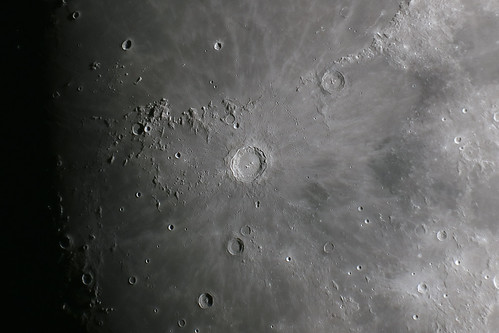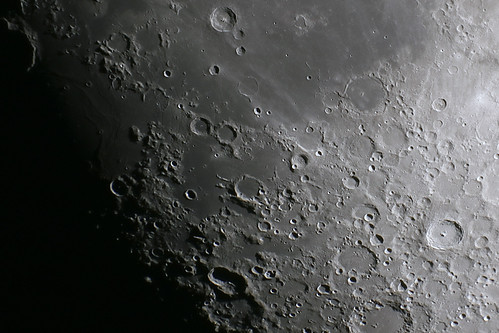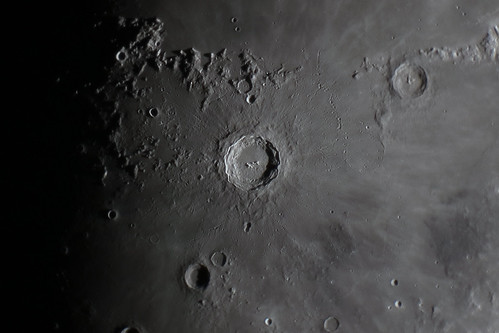22 April 2021, 19:30 – 21:10 (BST)
This evening the sky was dominated by a bright gibbous moon high up in Leo. The phase was very similar to that described on 23 March, but this time the seeing was even better. I took the opportunity to capture some images, followed by some observing.
Magnifications used: 171x (DeLite 7mm) and 240x (Nagler 5mm). As the Powermate was still attached to my camera, I used the Orion 2x Shorty Barlow with the 5mm Nagler to also reach a magnification of 480x. Copernicus at that power has to be seen to be believed.
Highlights: In addition to all the incredible detail in and around Copernicus, I also resolved four craterlets in Plato. The northern pair are very close together, which I probably why I didn’t split them last time around. I had fleeting glimpses of the Alpine Valley Rille; it appears to be at its widest in (ironically) the narrowest part of the valley, and so can easily be lost in shadow if the illumination isn’t optimal. Hesiodius A was showing well again, as was another concentric crater, the tiny Marth, in nearby Palus Epidemiarum (below). This was a tough one; the interior of the crater was partly shadowed, and I could only see the inner ring intermittently at the highest magnification when the seeing was perfect.
Nature note:
First swift of the year spotted some distance away to the south. (I needed binoculars to confirm it.)



